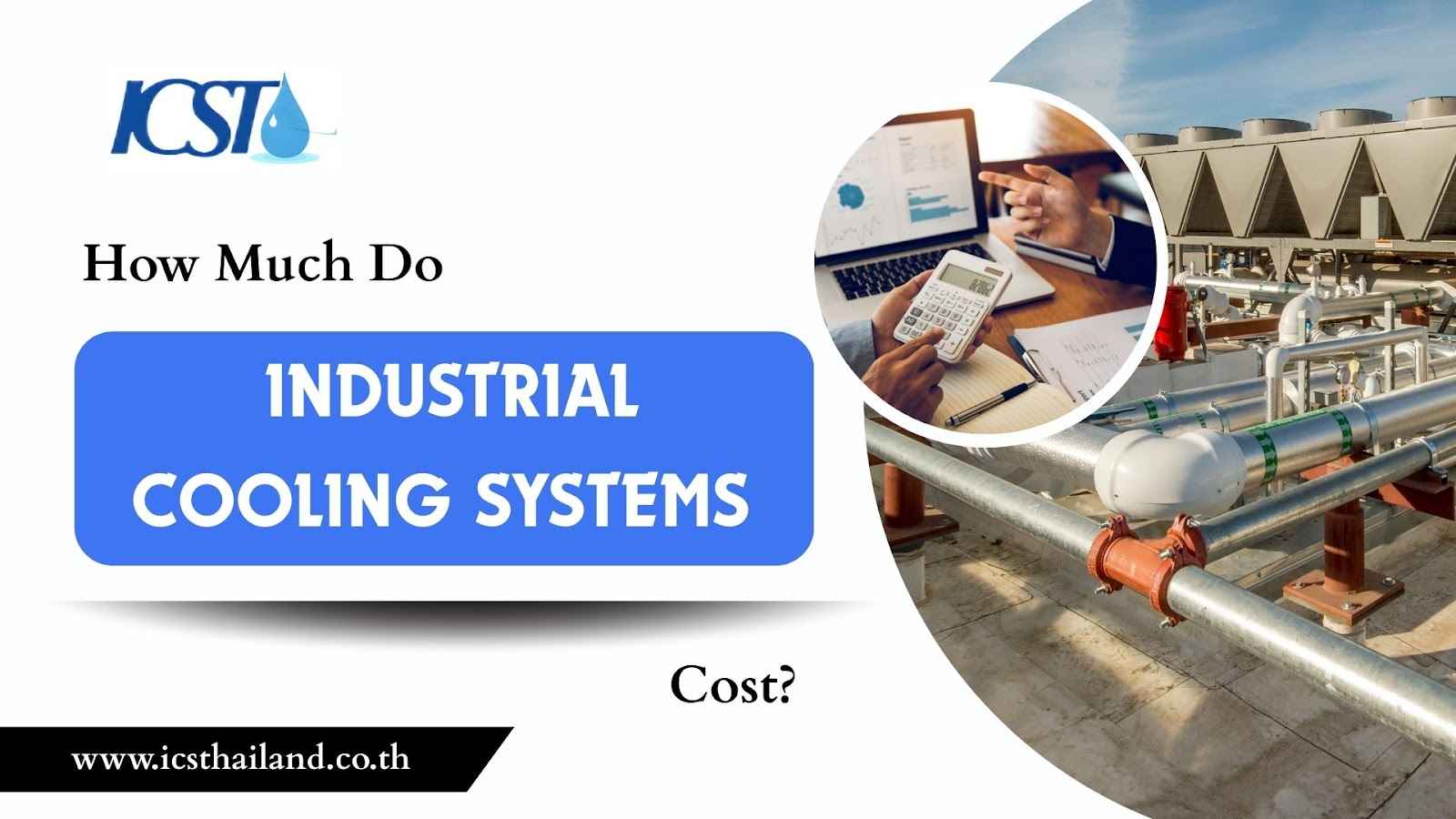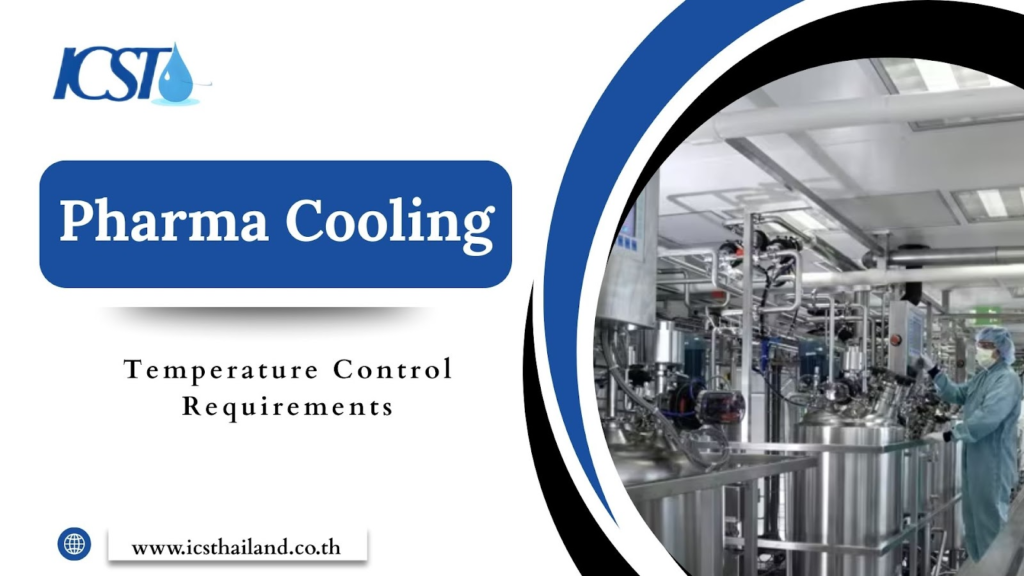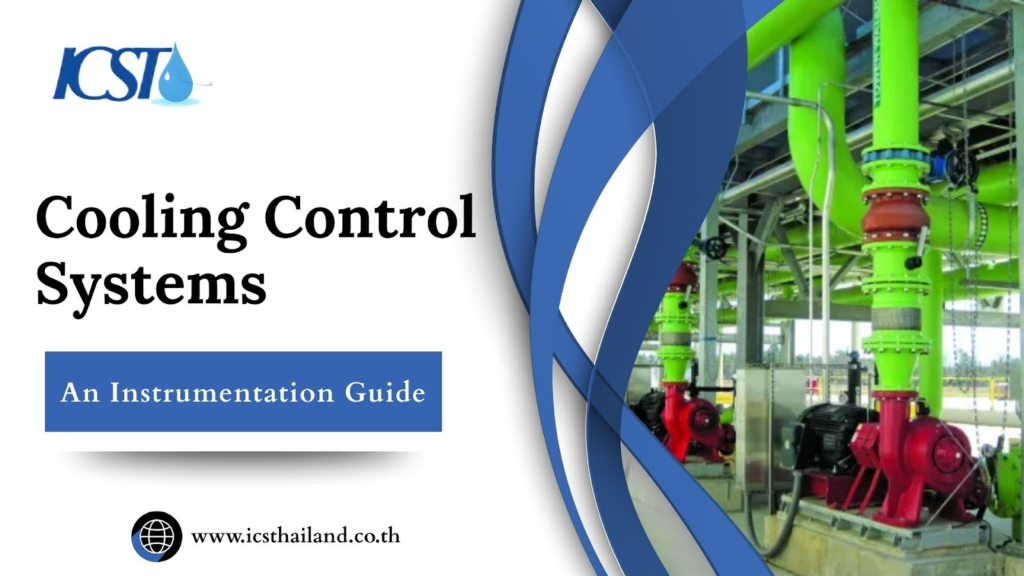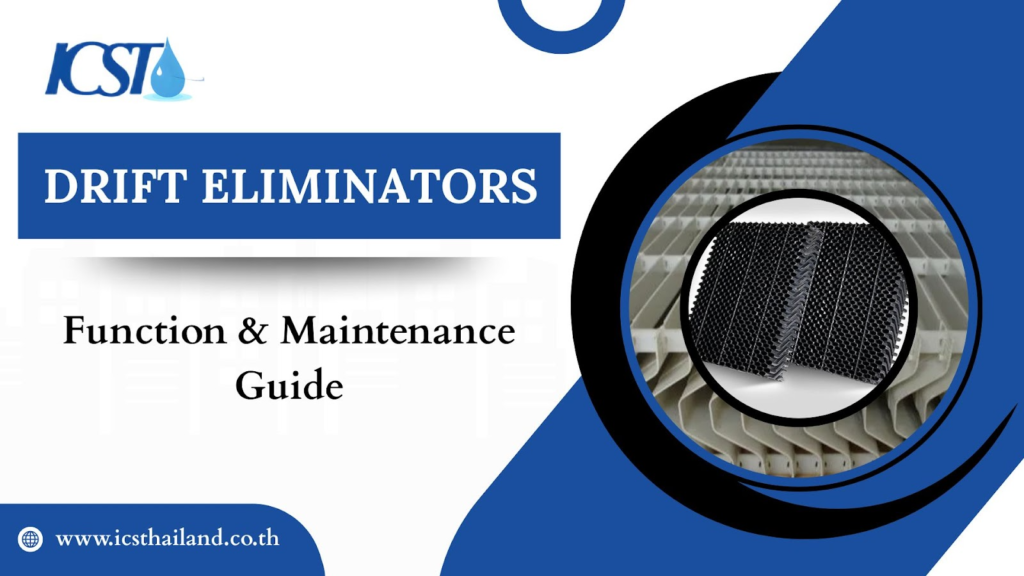When evaluating industrial cooling systems, the purchase price is just the tip of the iceberg. The true financial impact extends far beyond that initial investment, encompassing years of operational expenses that can dwarf the upfront costs.
Understanding the Total Cost of Ownership (TCO) is crucial for making smart, long-term financial decisions. A system with a lower purchase price might seem attractive, but higher energy consumption and frequent maintenance can make it the most expensive choice over its lifetime.
This comprehensive guide breaks down the Industrial Cooling Systems Cost, covering both initial investments and ongoing operational expenses, specifically for the Thailand market.
Table of Contents
ToggleThe Two Sides of the Coin: CAPEX vs. OPEX
Every industrial cooling system investment involves two distinct categories of cost that require careful consideration.
Capital Expenditure (CAPEX): Initial Investment
- Capital expenditure represents the one-time costs incurred for purchasing and setting up your cooling system.
- These expenses include equipment purchase, installation labor, site preparation, and all ancillary components needed to make the system operational.
- CAPEX is often the most visible cost because it requires immediate budget approval and cash outlay. However, focusing solely on minimizing CAPEX can lead to poor long-term financial outcomes.
Operational Expenditure (OPEX): Ongoing Costs
Operational expenditure refers to the ongoing costs required to operate and sustain a system over its entire lifespan. This includes expenses such as energy usage, water consumption, chemicals, regular maintenance, repairs, and labor.
OPEX continues for 15-25 years or more, making it the larger financial consideration for most systems. Smart facility managers evaluate OPEX carefully when making equipment decisions.
Initial Investment (CAPEX) Breakdown
The upfront Industrial Cooling Systems Cost includes multiple components that can vary widely depending on the type and complexity of the system.
Equipment Purchase Price
The equipment cost varies dramatically based on several factors. What determines the price range for your specific application?
- Small cooling towers: $5,000-$25,000 for basic models
- Large industrial cooling towers: $50,000-$200,000+, depending on capacity
- Air-cooled chillers: $15,000-$150,000+ based on tonnage
- Water-cooled chillers: $20,000-$300,000+ for high-capacity units
- Evaporative condensers: $10,000-$75,000 for typical industrial sizes
System capacity, brand reputation, efficiency ratings, and advanced features like variable frequency drives significantly impact pricing. Premium materials and specialized coatings for harsh environments command higher prices but offer superior longevity.
Installation Costs
Professional installation ensures optimal performance and system longevity. What does the installation process actually involve?
- Skilled labor: Certified technicians, electricians, and plumbers
- Site preparation: Foundation work, structural reinforcement, and civil works
- Heavy equipment: Cranes and rigging for large system placement
- Transportation: Logistics within Thailand’s infrastructure
- Testing and commissioning: System startup and performance verification
Installation typically adds 15-30% to equipment costs, with complex installations potentially reaching 50% of equipment value.
Ancillary System Costs
Supporting infrastructure often represents a significant portion of total CAPEX. Which components are essential for proper system operation?t
- Pumps: Circulation, makeup water, and chemical feed pumps
- Electrical infrastructure: Switchgear, control panels, and specialized wiring
- Ductwork: Fabrication and installation for air-handling systems
- Control systems: Automation and monitoring equipment
These components can add 25-40% to the base equipment cost but are essential for reliable operation.
Engineering & Design Fees
Professional engineering ensures compliance and optimal performance. What value do engineering services provide?
- System sizing: Load calculations and capacity determination
- Integration planning: Coordination with existing facility systems
- Regulatory compliance: Meeting local Thai building and safety codes
- Efficiency optimization: Design features that minimize operational costs
- Documentation: As-built drawings and operation manuals
Engineering fees typically range from 5-15% of total project cost but provide crucial value through proper system design.
Ongoing Operational Costs (OPEX) Breakdown
Operational expenses are a significant part of the Industrial Cooling Systems Cost and often surpass CAPEX within 2-5 years of operation.
Energy Consumption
Energy represents the largest operational expense for most cooling systems. What drives these ongoing costs?
- Fan motors: Moving air across heat exchange surfaces
- Pump motors: Circulating water through the system
- Compressors: Refrigeration cycle operation in chillers
- Control systems: Automation and monitoring equipment power
Thailand’s industrial electricity rates and high ambient temperatures significantly impact energy costs. Systems operating 24/7 can consume $10,000-$100,000+ annually in electricity, making efficiency a critical investment factor.
Water Consumption & Treatment
Evaporative cooling systems require substantial water resources and treatment. How do these costs accumulate?
- Evaporation loss: Water lost to the cooling process
- Blowdown: Water discharged to maintain quality standards
- Drift loss: Small amounts of water carried by exhaust air
- Chemical treatment: Corrosion inhibitors, biocides, and scale preventers
- Water testing: Regular analysis to maintain optimal conditions
Water-related costs can range from $2,000-$15,000+ annually depending on system size and local water prices in Thailand.
Maintenance & Repairs
Regular maintenance preserves efficiency and prevents costly failures. What maintenance activities require ongoing investment?
- Routine inspections: Daily, weekly, and monthly system checks
- Cleaning: Heat exchanger surfaces, filters, and water basins
- Component replacement: Belts, bearings, nozzles, and fill media
- Seasonal maintenance: Comprehensive annual overhauls
- Emergency repairs: Unplanned component failures
Annual maintenance costs typically range from 2-5% of system CAPEX, with older systems requiring higher investment.
Labor & Monitoring
Skilled operation maximizes efficiency and reliability. What human resources are required?
- Daily monitoring: System performance and water quality checks
- Troubleshooting: Identifying and resolving operational issues
- Record keeping: Documentation for maintenance and compliance
- Training: Staff education on proper operation procedures
Labor costs vary significantly based on automation level and staff expertise, ranging from minimal for highly automated systems to substantial for manual operations.
Cost Comparison by System Type: Cooling Towers vs. Chillers vs. Evaporative Condensers
Different cooling technologies offer distinct cost profiles that suit various applications and budgets.
Cooling Towers
Cooling towers provide economical heat rejection for large industrial processes. What makes them cost-effective?
CAPEX: Generally lower than equivalent chiller capacity, with simple designs minimizing initial investment.
OPEX: Lower energy consumption due to the absence of compressors, but higher water usage creates ongoing treatment costs. Energy costs are primarily fan and pump motors.
Ideal applications: Manufacturing processes, power generation, and applications where process temperatures can approach ambient wet-bulb conditions.
Total annual operating costs often favor cooling towers for high heat rejection loads, making them popular in Thailand’s industrial sector.
Chiller Systems (Air-Cooled & Water-Cooled)
Chillers provide precise temperature control but require higher investment and operating costs. When do these costs make sense?
CAPEX: Higher initial investment, especially for large capacity or precision applications. Water-cooled chillers may cost less initially, but require cooling towers.
OPEX: Significantly higher energy consumption due to compressor operation. Electrical costs can be 3-5 times higher than equivalent cooling tower capacity.
Ideal applications: Data centers, pharmaceutical manufacturing, food processing, and comfort cooling, where precise low temperatures are essential.
The premium for temperature precision often justifies higher costs in critical applications.
Evaporative Condensers
Evaporative condensers offer a middle ground between cooling towers and chillers. How do their costs compare?
CAPEX: Mid-range pricing, often less expensive than separate chiller and cooling tower combinations for equivalent capacity.
OPEX: Moderate energy consumption combining fan, pump, and some refrigeration components. Water treatment costs are similar to those of cooling towers.
Ideal applications: Refrigeration systems, food processing, and industrial processes requiring efficient heat rejection at moderate temperatures.
These systems often provide optimal cost-effectiveness for refrigeration applications.
Key Factors Influencing Your Total Cost
Multiple variables significantly impact both initial investment and long-term operational expenses.
Cooling Capacity & Heat Load (Tonnage)
- System size directly correlates with cost across all categories. How does capacity affect your investment?
- Larger systems require proportionally higher CAPEX and OPEX, but often provide better economies of scale.
- Accurate load calculations prevent costly sizing errors that impact performance and efficiency throughout the system’s lifetime.
Materials of Construction & Durability
Material selection impacts both cost categories significantly. Which materials provide the best long-term value?
- Stainless steel: Higher initial cost with excellent corrosion resistance
- Fiberglass reinforced plastic (FRP): Premium CAPEX with minimal maintenance requirements
- Specialized coatings: Additional upfront cost with extended component life
Thailand’s humid climate and potential water quality issues make material selection particularly important for long-term cost control.
Energy Efficiency Ratings
Efficiency ratings directly translate to operational cost savings. How much difference do efficiency improvements make?
Higher ratings for EER (Energy Efficiency Ratio), SEER (Seasonal Energy Efficiency Ratio), and IEER (Integrated Energy Efficiency Ratio) result in reduced operating expenses over the system’s lifespan.
A 10% efficiency improvement can save thousands of dollars annually in electricity costs, often justifying 15-25% higher CAPEX within 2-3 years.
Calculating Total Cost of Ownership (TCO)
TCO analysis provides the complete financial picture for cooling system investment decisions.
The basic TCO calculation includes all expenses incurred throughout the system’s anticipated lifespan:
TCO = CAPEX + Σ(Annual OPEX × Years of Operation)
A system with 20% lower CAPEX might have 40% higher TCO due to energy inefficiency and maintenance requirements. This analysis reveals why the cheapest initial option often becomes the most expensive long-term choice.
Discount rates and inflation should be considered for multi-decade comparisons, with most industrial cooling systems operating effectively for 15-25 years with proper maintenance.
Conclusion
The cost of an industrial cooling system extends far beyond the purchase price, encompassing complex interactions between initial investment and decades of operational expenses. Understanding CAPEX, OPEX, and TCO is essential for making wise investment decisions that serve your facility’s long-term interests.
Thailand’s unique climate conditions, energy costs, and industrial requirements demand specialized expertise to optimize cooling system investments. The difference between a good decision and a great one often lies in the details of system design, component selection, and integration planning.
Don’t tackle the complexities of Industrial Cooling Systems Cost on your own. At ICST, we specialize in designing, installing, and maintaining efficient cooling solutions tailored to your facility in Thailand.
Contact ICST today for a detailed cost assessment and discover how the right cooling system investment can improve your operations while protecting your bottom line.
Frequently Asked Questions
How long do industrial cooling systems typically last?
With regular maintenance, industrial cooling systems can function efficiently for 15 to 25 years. Cooling towers and evaporative systems often have a lifespan of over 20 years, whereas chillers generally last between 15 and 20 years.
How can I reduce water consumption costs in my cooling system?
Implementing high cycles of concentration, optimizing blowdown schedules, using efficient drift eliminators, and proper water treatment can reduce consumption by 20-40% while maintaining system performance.
Is it better to buy a cheaper system and upgrade later?
Generally no. The labor costs, system downtime, and integration challenges of retrofitting often exceed the savings from advanced technology purchased initially.
What maintenance budget should I plan for cooling systems?
Plan for 2-5% of system CAPEX annually for maintenance costs. Newer, higher-quality systems trend toward the lower end, while older or basic systems require budgets toward the higher range.








